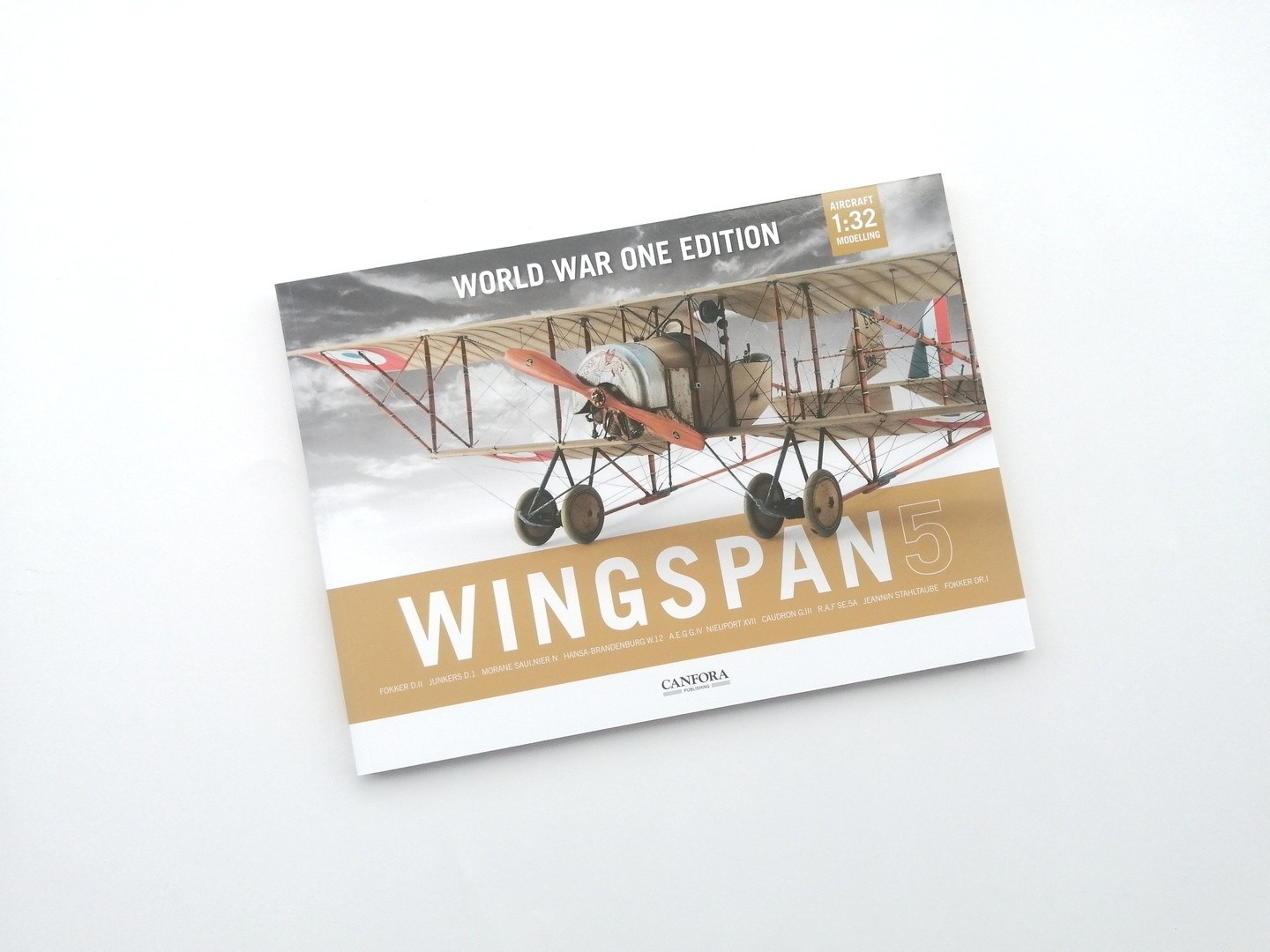
The latest volume in the Wingspan series is dedicated to WWI model aircraft, specifically in 1:32 scale. It is a softcover book in A4 landscape format, with 128 pages of glossy paper, which immediately catches the eye with its elegant and colorful page layout and large photos. Each chapter is color-coded, making it easy to jump to a different section without having to look at the page number in the table of contents. Ten model airplanes are included, and each article averages 12 to 14 pages in length.
The content is:
- Hansa-Brandenburg W.12 by Mikael Terfors
- Nieuport XVII by Zdenek Sebesta
- Jeaninn Stahltaube by Dirk Polchow
- Royal Aircraft Factory SE.5a by Mikael Terfors
- Caudron G.III by Mikael Terfors
- Fokker DR.I by Kamil Trembacz
- Fokker D.II by Mikael Terfors
- Junkers D.1 by Mikael Terfors
- Morane Saulnier Type N by Toni Canfora
- AEG G.IV Late by Mikael Terfors
All the models are truly excellent, made by skilled builders and painters. Each article includes a brief historical introduction, a description of the kit and an explanation of how it was built and painted.
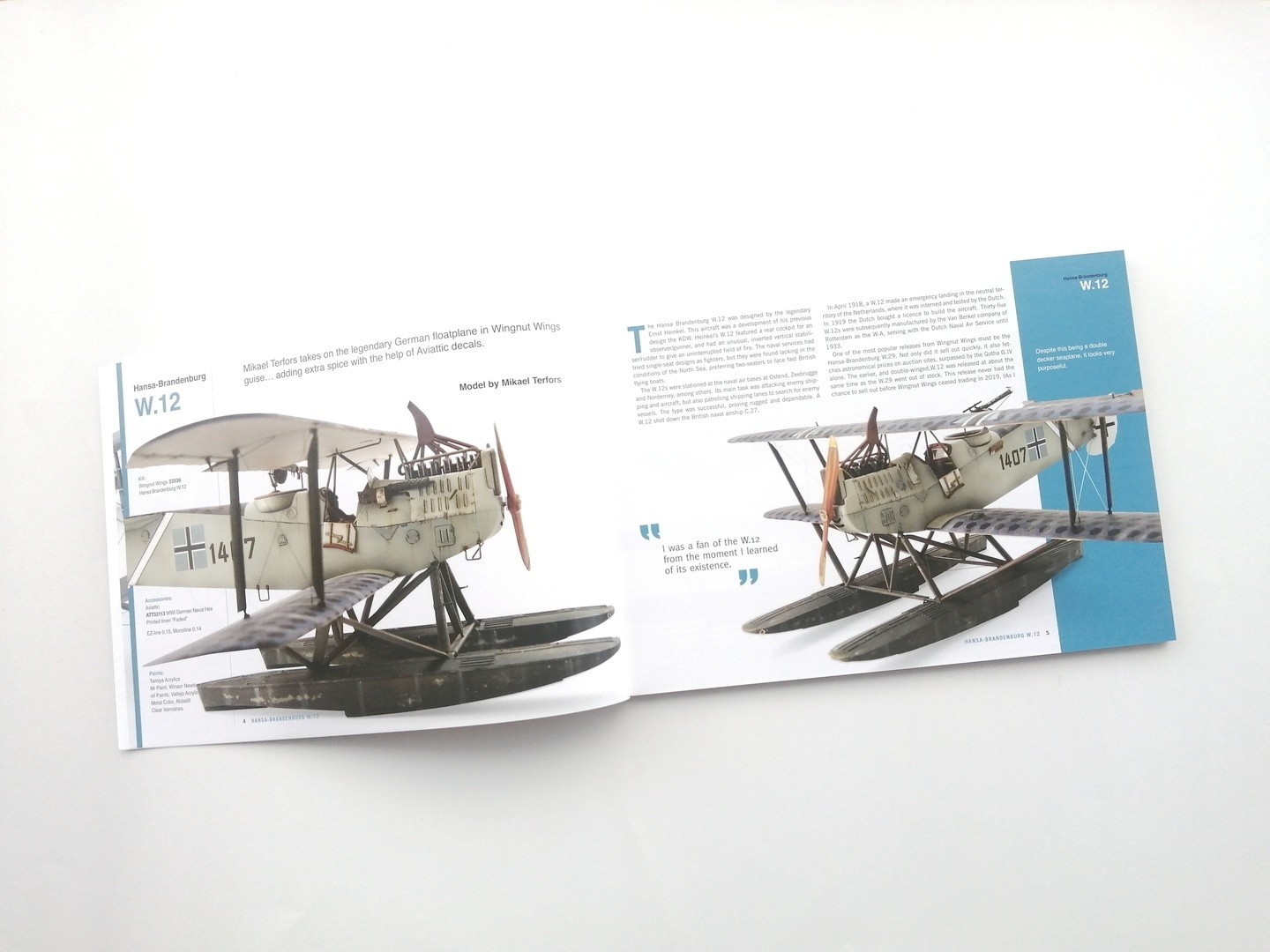
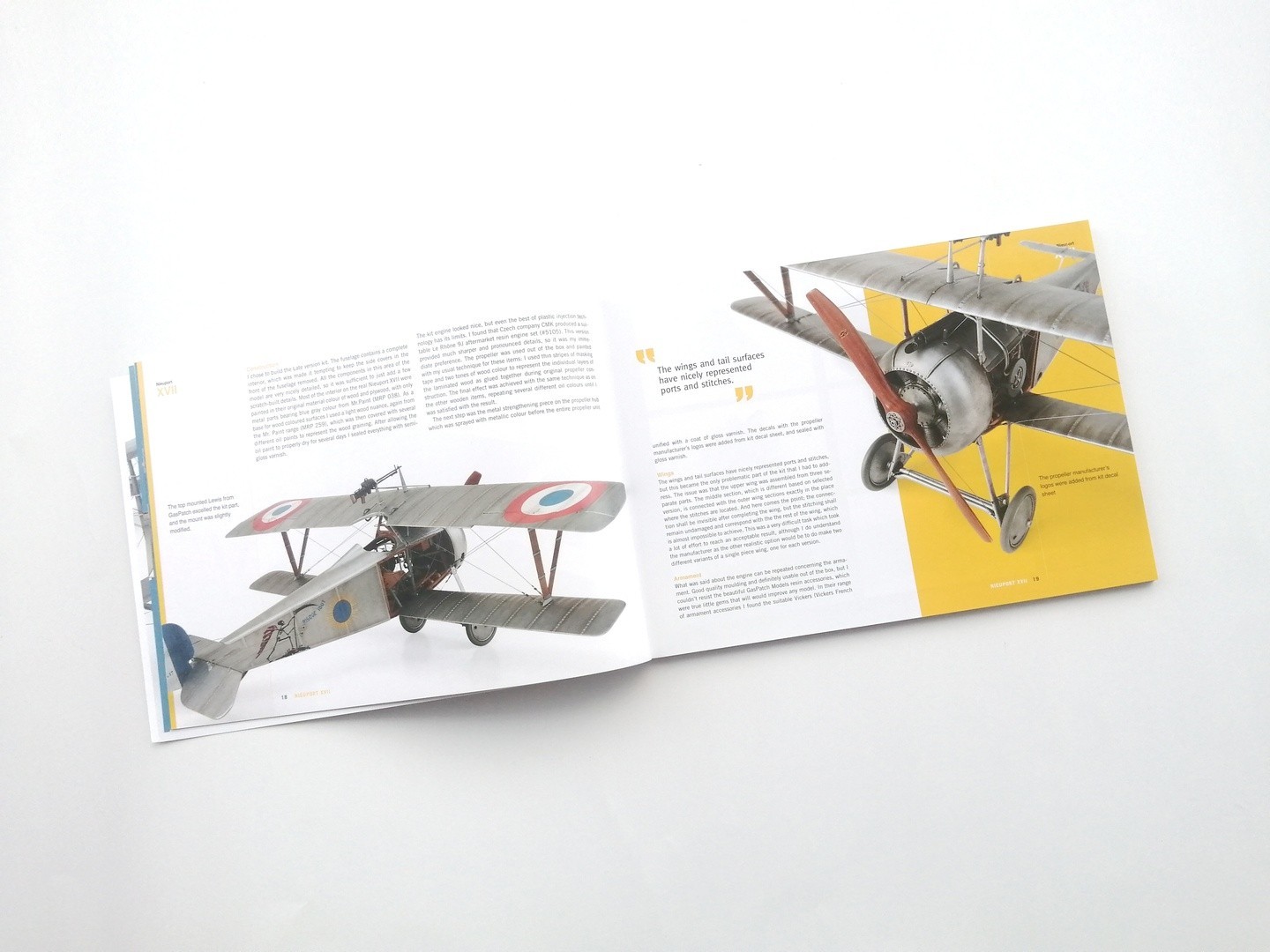
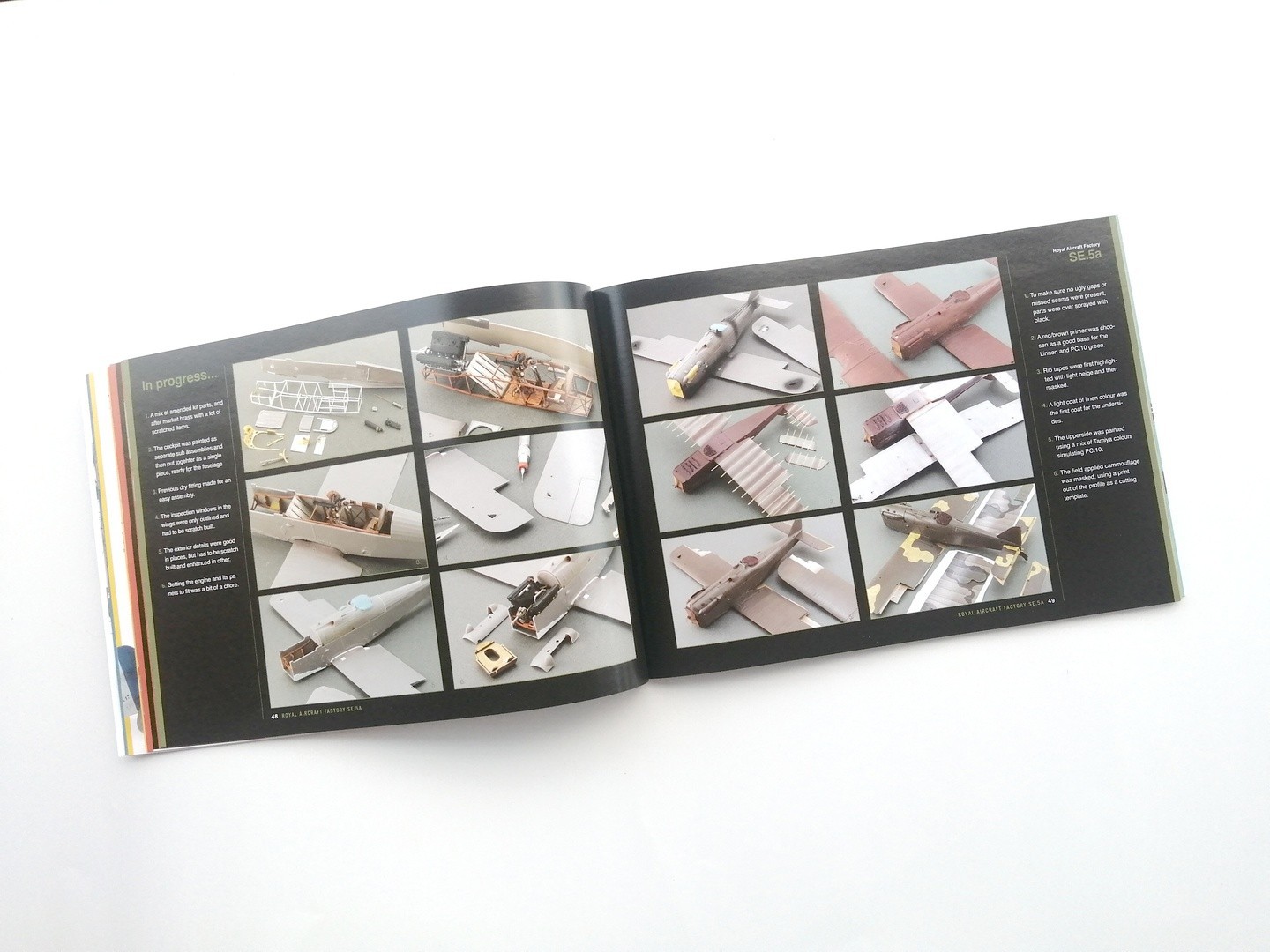
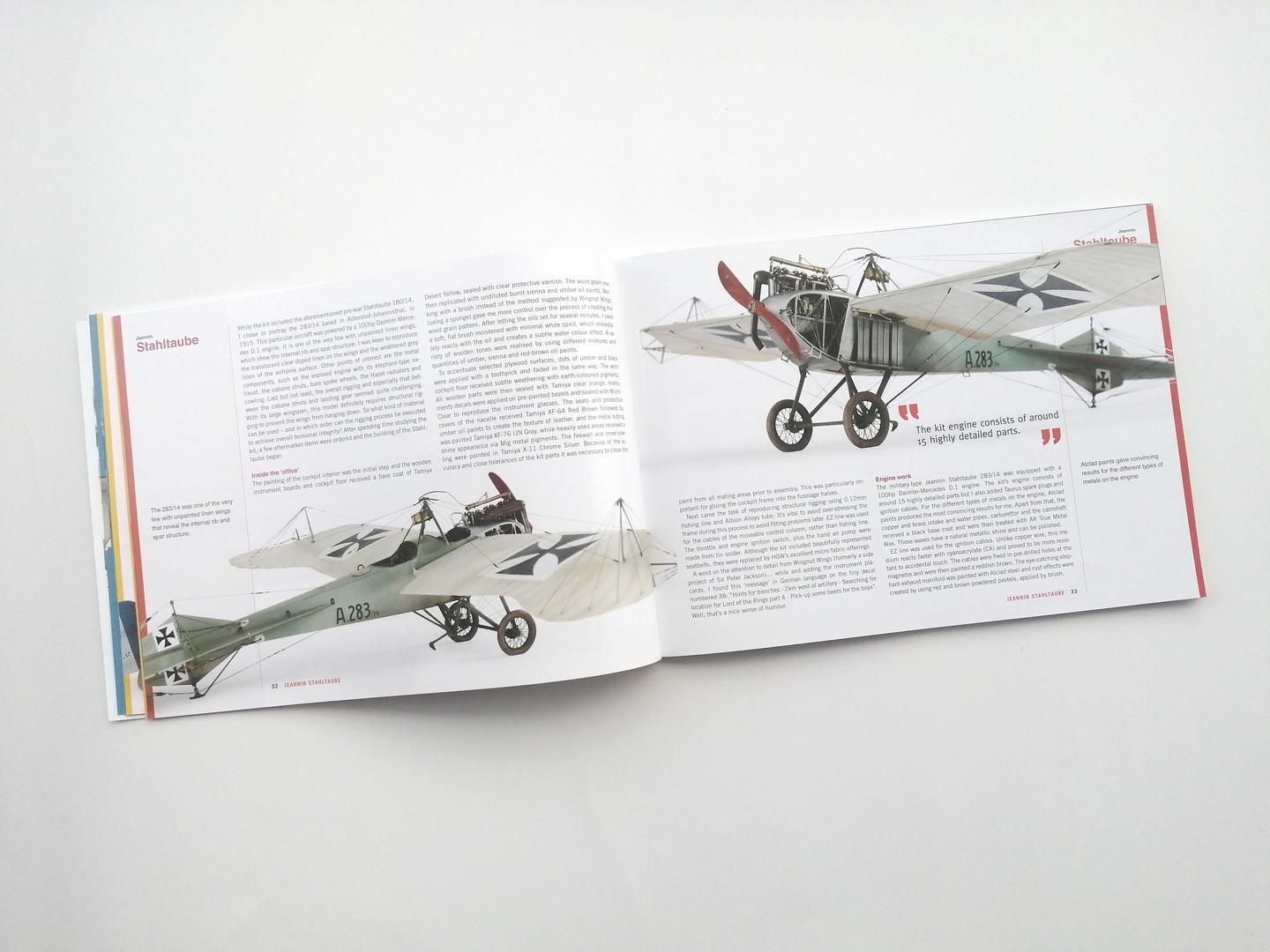
As usual in the Wingspan series, traditional text pages are combined with others in a step-by-step format, with six photos per page and the corresponding captions referenced by numbers. On the right of the first page of each model, there is a handy summary of kit, aftermarket and paints used.
The photos on the first type of pages are large, often filling the page from one side to the other and using the remaining space for text. All are photos of the finished model at different angles and zoom levels. The text is pleasant to read, an account of construction and painting without being too detailed or heavy, but without omitting important information. It assumes that the reader has enough knowledge to be able to use the book as a guide without having to go through every step in detail.


The step-by-step sections, on the other hand, go into more depth on some aspects of the construction or painting. There are progress photos and although not all stages are described, some key areas are treated. In general, the models have been improved, both with aftermarket parts and scratch building.
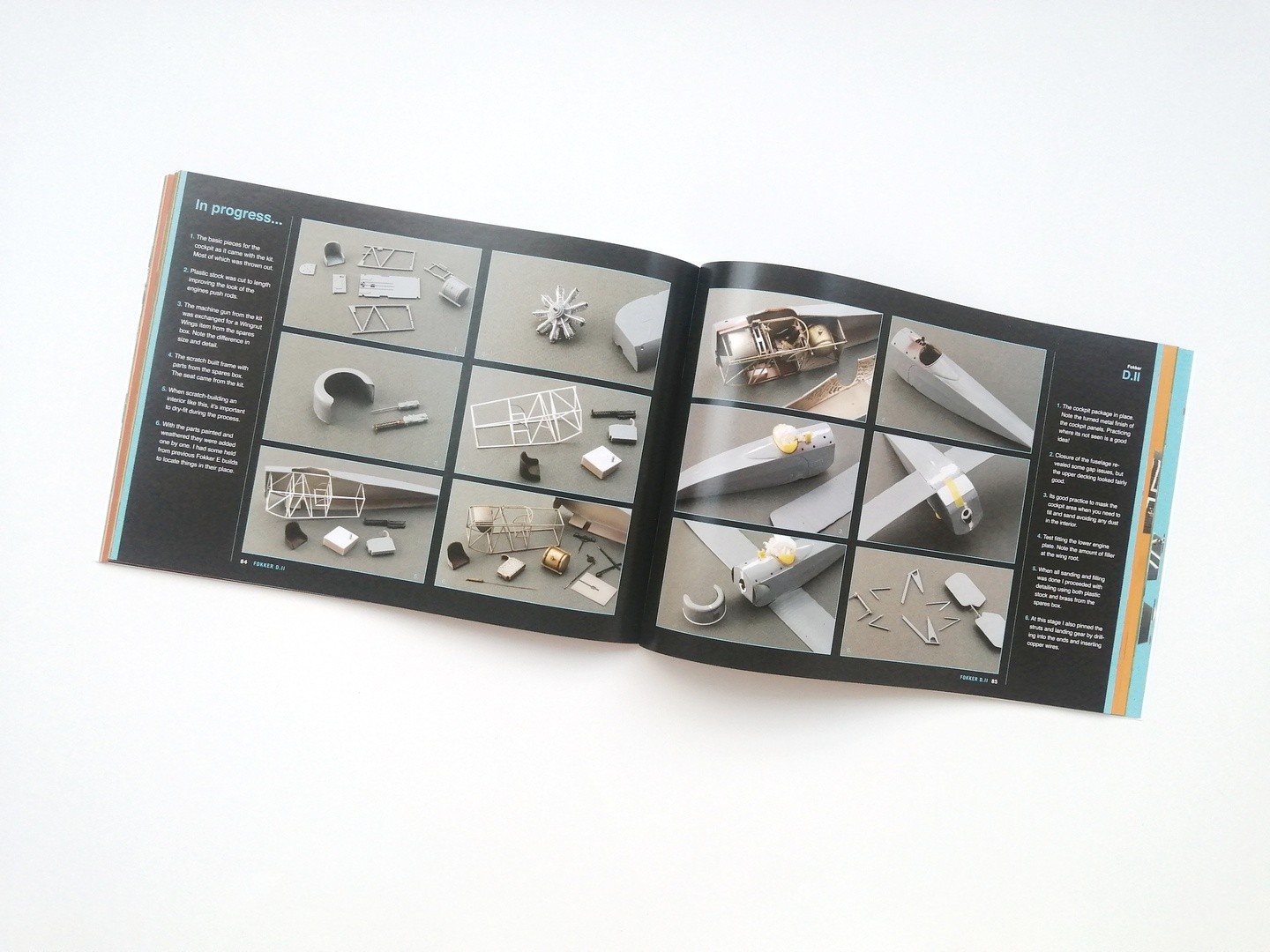
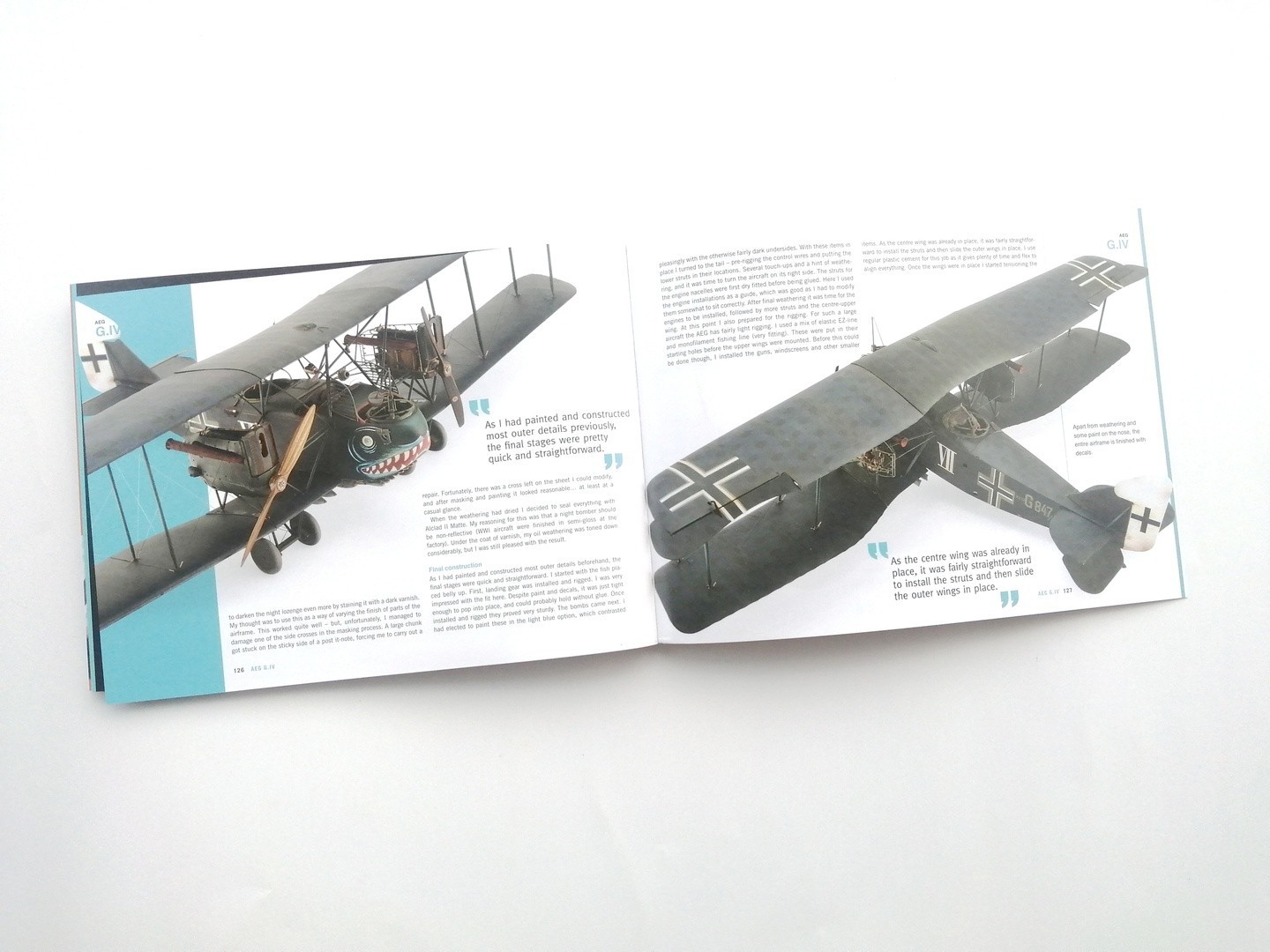
The weathering on the aircraft is very realistic, without being extreme.
Within what is the driving theme of the book, planes of the First World War, there is quite a variety as there are one, two and three wing planes, French, English and German, and painted with very different schemes. Since they are also the work of different modelers, each one shows his particular style.
In several models , the engine has been left exposed, which allows to appreciate the great work of assembly and painting.

Conclusion
Canfora has created again a very nice book to have, with large photos, elegant design and very well made models of aircraft from a past time. The scale of the models allows them to have a lot of detail and thanks to the size of the photos this is perfectly appreciated.
WWI fans specially will enjoy reading this book, but I am sure many others will love it as well.










